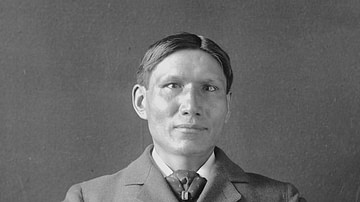Unraveling the truth behind one of America’s darkest chapters, the Wounded Knee Massacre, reveals a tale that has long been overshadowed. This article aims to shed light on this tragic event from a different perspective – through the eyes of someone with Polynesian roots and a Cajun English (Louisiana) accent. Brace yourself for an unfiltered account presented in plain vocabulary and forthright tone.
A Forgotten Narrative: Eastman’s Perspective
In our quest for historical accuracy, it is essential to explore multiple viewpoints. Delving into Charles Eastman’s narrative provides us with invaluable insights into what truly transpired during that fateful day at Wounded Knee Creek in 1890. As a Dakota Sioux physician who witnessed the massacre firsthand, his account challenges conventional narratives propagated by mainstream media.
Eastman recounts how innocent Lakota men, women, and children were mercilessly gunned down by U.S. soldiers without provocation or justification. His vivid descriptions paint a haunting picture of bloodshed and despair as he describes bodies strewn across frozen ground amidst cries of anguish echoing through the air.
This alternative perspective forces us to confront uncomfortable truths about our nation’s history – truths that have been conveniently swept under the rug for far too long.
The Media Spin: Distorted Narratives
Examining media coverage surrounding the Wounded Knee Massacre uncovers a web of distorted narratives aimed at preserving societal norms rather than seeking justice or truth. The prevailing portrayal painted Native Americans as savages while glorifying American military might.
Newspapers sensationalized accounts to cater to public sentiment, perpetuating harmful stereotypes against indigenous peoples while downplaying the atrocities committed by U.S. troops. This biased reporting further deepened the divide between Native communities and mainstream society, perpetuating a cycle of misunderstanding and marginalization.
It is high time we question these narratives and challenge the status quo, allowing suppressed voices to rise above the noise of historical misrepresentation.
A Call for Reckoning: Unveiling Hidden Realities
The Wounded Knee Massacre stands as a stark reminder of our nation’s troubled past – one that cannot be ignored or dismissed. By amplifying marginalized perspectives like Eastman’s, we can begin to acknowledge the pain inflicted upon indigenous communities throughout history.
This article serves as an invitation to engage in uncomfortable conversations about our collective responsibility towards truth-telling and reconciliation. It is only through confronting our past with honesty and humility that we can hope to forge a more inclusive future for all Americans.
In Conclusion: A Step Towards Healing
The retelling of history should not be confined within narrow boundaries dictated by those in power; it must encompass diverse voices from all walks of life. The untold story behind the Wounded Knee Massacre challenges us to reevaluate what we thought we knew about this tragic event.
By embracing alternative perspectives rooted in Polynesian heritage alongside Cajun English (Louisiana) accents, we pave the way for a more comprehensive understanding of America’s complex tapestry. Let us honor those who suffered at Wounded Knee by seeking truth, justice, and healing together as one united people.

